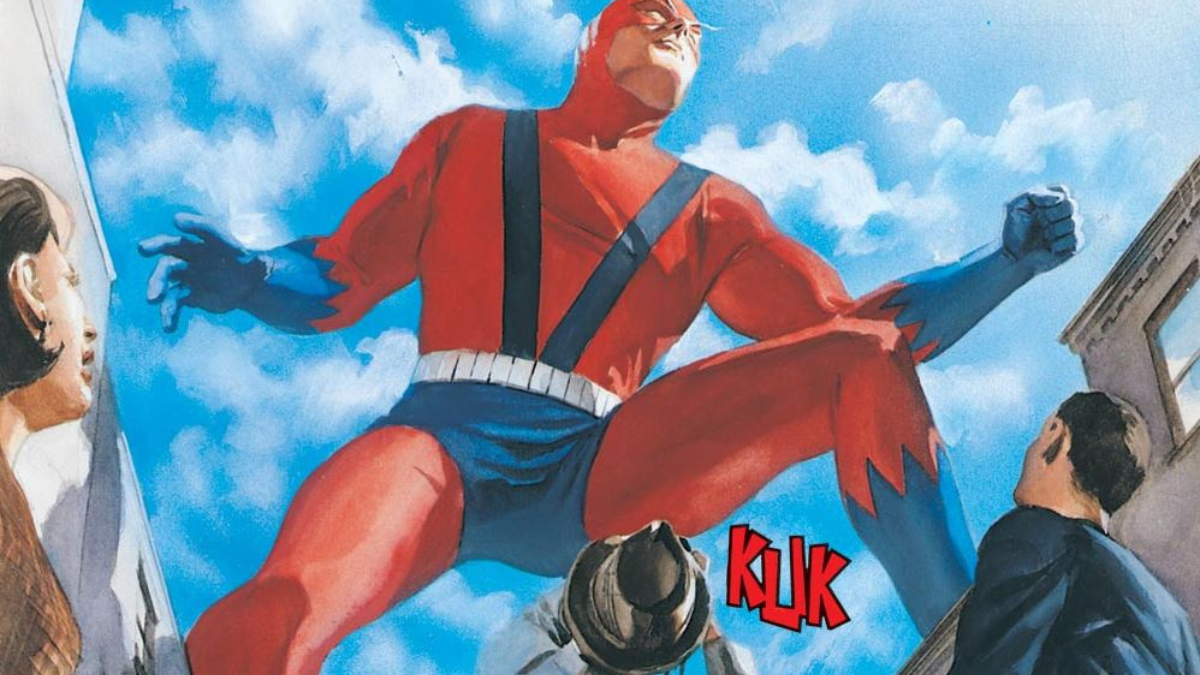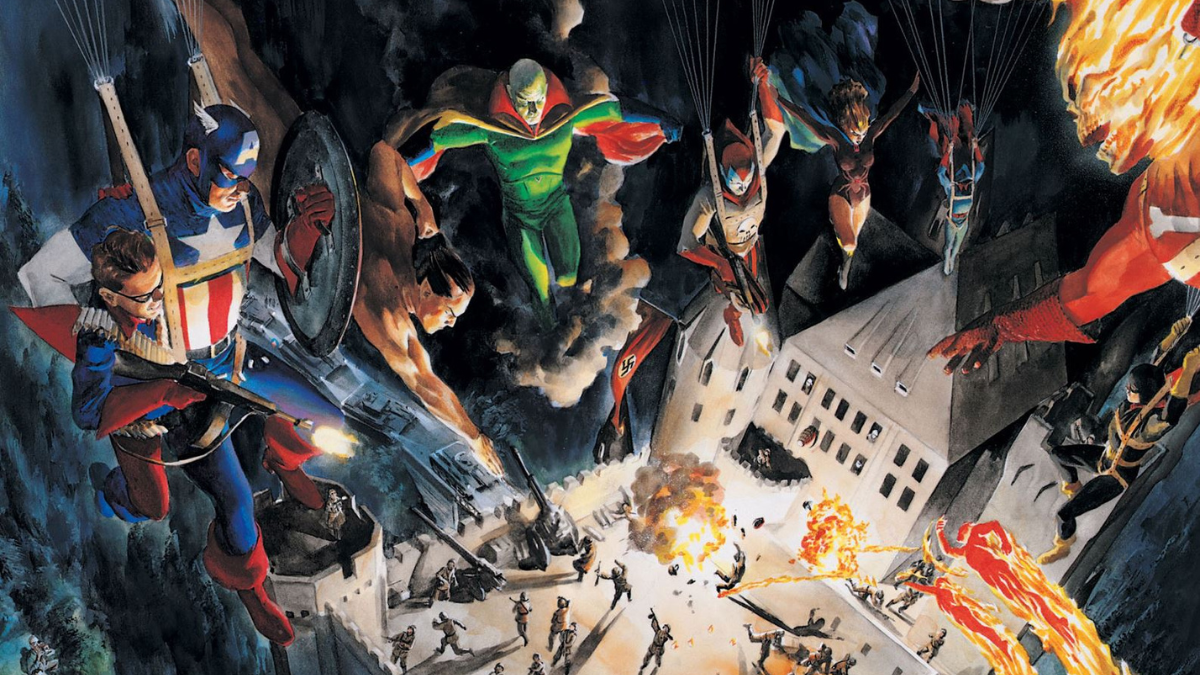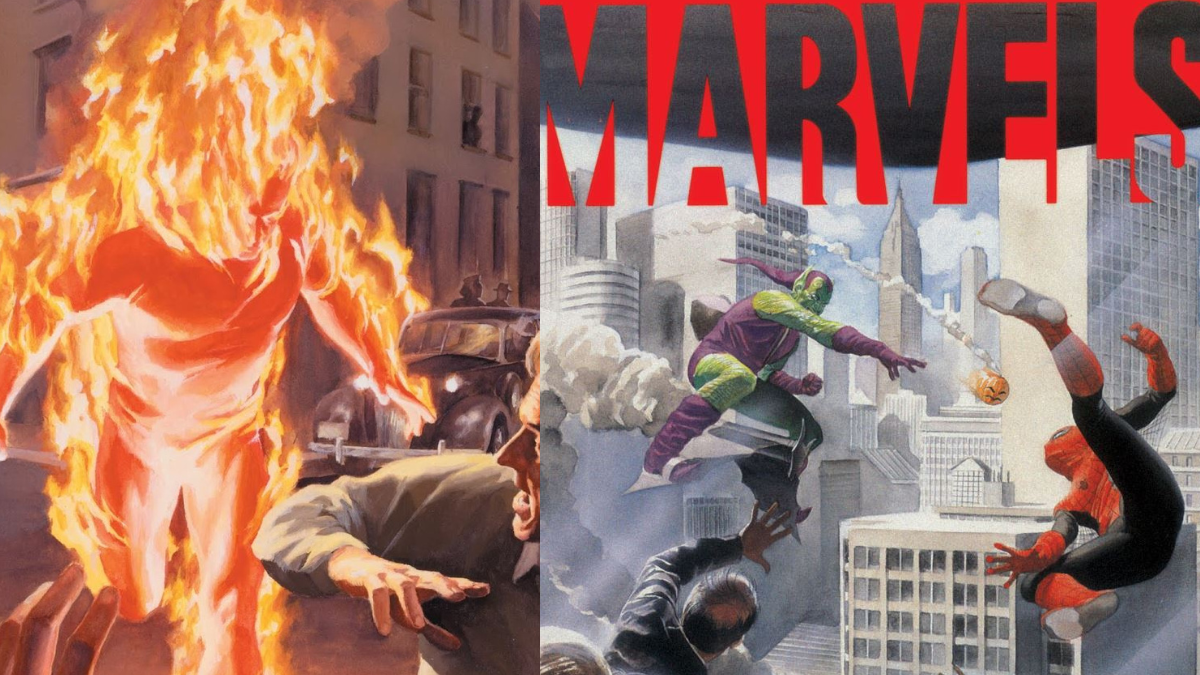At this point, it can be a daunting task to start diving into comic books. Take Marvel, for example. From the World War II adventures of Captain America to the introduction of the Fantastic Four and Spider-Man to the rise of the X-Men, Marvel Comics has decades and decades of iconic stories piled up in its legendary catalog.
For comic book aficionados, this is a goldmine. However, if you’re a casual reader, maybe inspired to finally pick up a few issues after traversing the MCU’s entirety on the silver screen, you may struggle with where to begin. If that’s the case, don’t worry; Alex Ross and Kurt Busiek have you covered.
In 1994, the artist-writer duo released a four-part miniseries that served as a straight-forward but thrilling retelling of Marvel’s in-world history. Simply titled Marvels, the series portrays some of the publication’s most famous events, all through the eyes of a civilian photographer, Phil Sheldon.
Sheldon is the perfect everyman character. Witnessing some of Marvel’s greatest and most tragic events through his eyes allows the reader to ease into these strange adventures. So, if you want to take a gentle but memorable leap into some of the best superhero stories ever told, all you need to do is accompany Sheldon and read Marvels.
Marvels examines a superhero world through the eyes of an endearing civilian

In Marvels, readers see Phil Sheldon grow from a young man to a distinguished photographer. Throughout his adult life, he witnesses countless “marvels” appearing.
The mini-series starts at the ground level, with the introduction of the first Human Torch – an android created by the scientist Phineas Horton. This blazing man immediately terrifies the people of New York City and serves as Sheldon and the reader’s entry into the realm of amazing and strange fantasy.
Following soon after, the Sub-Mariner appears and clashes with the police officers and, eventually, the Human Torch. During all of this, Sheldon begins to feel small and helpless. What is an everyday citizen to do when a literal Fire-Man begins blazing across the city while a bullet-proof underwater elf starts throwing police cars like baseballs? The mere existence of the Human Torch and Namor and the incredible powers they wield makes Sheldon question everything. How can he get married in a world where “monsters” roam so freely and cause catastrophic damage with impunity? Kurt Busiek and Alex Ross maintain the glamorous and romanticized nature of superheroes and their adventures but allow readers to see things from a realistic civilian perspective.
Sheldon’s fear and apprehension are felt on every page and panel. Through his eyes, as the series progresses, we see the rise of countless more heroes, and his reactions offer such a fascinating insight into Marvel’s world. His thoughts are the reader’s thoughts. While Namor and the Human Torch made him anxious, the debut of Captain America fills him with patriotic pride. Sheldon treats the Fantastic Four like celebrities, yet he looks at mutants like the X-Men with initial disdain. Why are Invisible Woman and Mister Fantastic lauded, but Cyclops and Iceman must be feared? Marvel fans have wondered this for decades, and Sheldon’s inner turmoil reveals that even characters in this universe can be confused by this hypocritical and prejudiced mindset.
Sheldon and his consistent reflections as the fantastical settings around him continue to change are what help elevate Marvels. Readers journey with this well-meaning everyman as Sentinels — anti-mutant mechanical terrors — take to the skies; they join Sheldon as freaking Galactus almost devours the Earth. However, the photographer doesn’t just serve as an observer of Marvel’s more mammoth-sized events; he also witnesses some of the most personal and tragic affairs, such as the death of Gwen Stacy, an event that has a profound and scarring effect on him, and an episode that helps bring Alex Ross and Kurt Busiek’s masterpiece to a close.
With Marvels, Alex Ross wanted to combine his love of history and superheroes

Alex Ross is one of the most prominent and renowned comic book illustrators today. His vintage tone and hyper-attention to realistic detail has made his style one of the most noticeable and widely praised. And while he has worked on countless other iconic projects — such as Astro City and DC’s Kingdom Come — Marvels is arguably his most famous work.
In 2019, celebrating his birthday and the 25-year anniversary of Marvels, Alex Ross dove deep into the series and what helped inspire him and the project. “With Marvels, the thing that I was thinking of was honestly just an anthology series.”
Touching on the publication’s initial history as “Timely Comics,” the illustrator described why he was so intrigued by telling the “first story” with the Human Torch. “My inspiration for why I got so fixated on the Human Torch came kind of out of the blue. It was because I was doing this Terminator comic book series when I was 19.” After drawing the iconic Terminator skeleton surrounded by a wall of flames, Ross was enticed to learn how to paint fire even better. “The idea that if I could illustrate this famous comic book character who originated from then, rebirth him in a way where you’re seeing and believing it like you’re watching a movie and you think, ‘That looks like a man on fire’… that’s what got me to thinking of this whole plot rolling out. I just wanted to show what I could do.”
Touching on the importance of Phil Sheldon, Ross stated: “The observer looking in through a story, sort of bringing into the realism I wanted to apply to the superheroes, is really just a metaphoric reflection of the feeling I had as a fan. I wanted to believe this stuff that much more aesthetically. I wanted to look at the comic art and think it was a representation of real things and events.”
Talk about knocking it out of the park. Marvels remains one of the most “real” comic book tales ever told. So, if you don’t know when or where to begin with Marvel’s incredible history and world, Alex Ross has your back.

